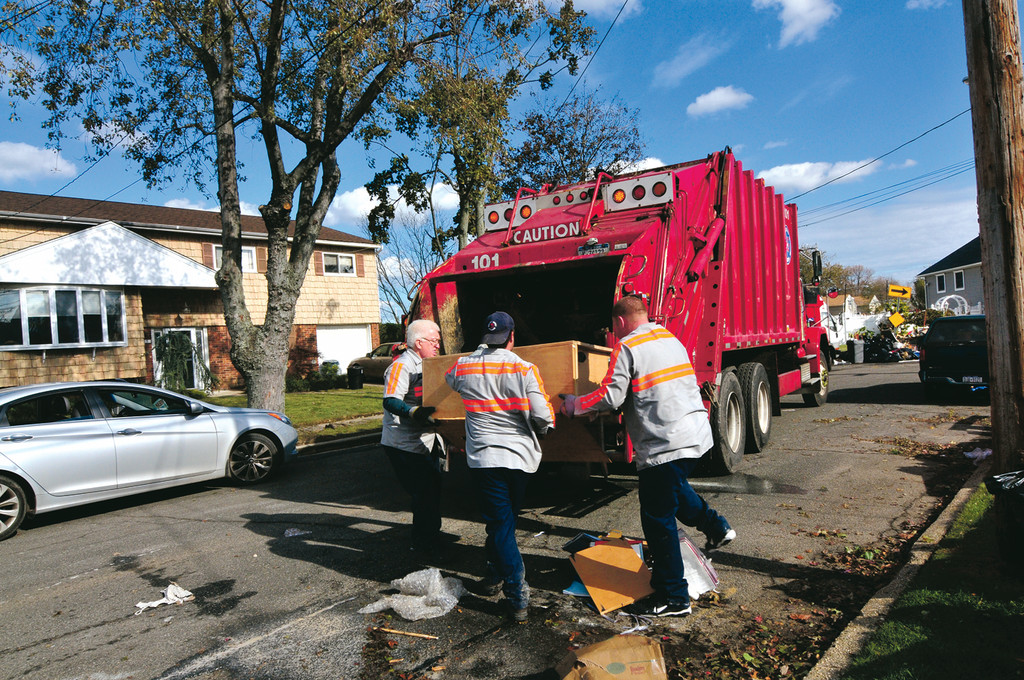Cleaning up Oceanside
Sanitary District 7 worked ‘sunup to sunset’ after Sandy
After Hurricane Sandy flooded homes in Oceanside, destroying floors, walls and furniture, residents began the heartbreaking and arduous task of throwing out most of their possessions.
That created a secondary problem in the post-storm chaos: Where was all that trash going to go, and who was going to get it there?
Sanitary District 7, though it serves all of Oceanside, is relatively small. There are 40 workers and 14 trucks. The department, headquartered on Mott Street, was heavily damaged in the storm.
“In our main garage we had a foot and a half of water,” said the district’s supervisor, Peter Bussa. “Our [basement], with our communications, heat and backup generator, that was under five feet of water. Our trucks were almost up to the headlights with water.”
Due to the flooding, only some of the employees made it in to work on Tuesday, Oct. 30. They began pumping out the basement and repairing the trucks, getting 12 of them operational. The following day, all of the workers showed up at 5 a.m., as usual, and got to work. “We worked sunup to sunset,” Bussa said. “And our guys are all local guys. So most of them were here sunup to sunset, and then we went home and dealt with our own tragedies.”
Though many flooded residents had already begun piling their ruined possessions outside, they were not immediate priorities for pickup. The main concern for the first few days — in all of Oceanside, not just the flooded areas — was getting rid of spoiling food. “We had to do that because of health issues,” Bussa explained. “You start to get rats and diseases.”
In the wake of the storm, many residents mentioned seeing Sani 7 workers appearing to pick and choose the houses whose trash they removed, stopping at one house, then skipping others to go to another down the block. The reason for that, Bussa explained, was the district’s second concern in the immediate aftermath: making sure the areas around fire hydrants were cleared. The concern was that if a fire broke out, responders might not be able to get to nearby hydrants, and the fire could spread.

 49.0°,
Fog/Mist
49.0°,
Fog/Mist 




